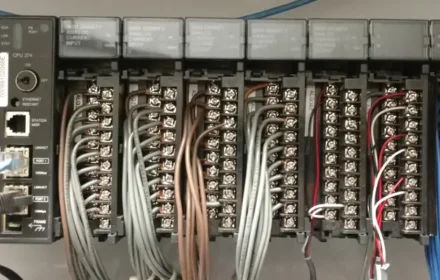
Secure by Operations: The New Standard for OT Cybersecurity in Industrial Automation
The Growing Threat to Critical Infrastructure
A new Schneider Electric study reveals alarming OT security gaps. Ninety-one percent of organizations suffered OT breaches recently. These incidents caused significant operational damage. Furthermore, they resulted in revenue loss and reputation harm. The study surveyed 250 OT security decision-makers globally. This highlights urgent needs for better control systems protection.
Current Security Gaps in OT Environments
Most organizations struggle with OT cybersecurity implementation. Fifty-one percent still use traditional IT practices. However, these methods often fail in industrial environments. Only forty percent maintain twenty-four-seven monitoring. Consequently, many attacks go undetected for extended periods. Seventy percent of security leaders express protection concerns.
The Secure by Operations Solution
Secure by Operations embeds cybersecurity into operational environments. It emphasizes proactive, continuous security measures. Seventy-five percent of organizations endorse this approach. Adopters report impressive operational benefits:
- Fifty-three percent faster recovery from incidents
- Fifty-one percent reduction in capital expenditure
- Fifty percent improvement in company reputation
- Forty-five percent gain in operational efficiency
- Forty-four percent better regulatory compliance
The Role of Managed Security Services
Managed security providers help bridge capability gaps. They offer specialized OT security expertise and staffing. Additionally, they provide continuous monitoring and threat detection. These services maintain compliance across industrial automation systems. They also manage incident response and recovery operations effectively.
Industry Leadership Perspective
“Cybersecurity risk requires accelerated action,” said Jay Abdallah of Schneider. Modern incidents surpass technical interruptions alone. They erode trust and threaten financial stability. Therefore, organizations must combine internal and external capabilities. Secure IT-OT integration drives industrial competitiveness significantly.
Practical Implementation Strategies
Organizations should adopt these operational security measures:
- Implement 24/7 monitoring for PLC and DCS systems
- Develop OT-specific security protocols and procedures
- Establish continuous security maintenance practices
- Integrate security into operational technology lifecycle
- Partner with specialized OT security providers
Expert Analysis from World of PLC
The study confirms what we see in industrial automation daily. Traditional IT security cannot protect control systems adequately. PLC and DCS environments require specialized protection approaches. According to IBM’s 2024 report, OT security incidents increased sixty percent. For professionals seeking deeper understanding, World of PLC offers comprehensive industrial automation security resources. These materials help implement effective factory automation protection.
Real-World Application Scenarios
Secure by Operations principles apply across multiple sectors:
- Manufacturing Plants: Protect automated production lines from cyber threats
- Power Grids: Secure SCADA systems controlling electrical distribution
- Water Treatment: Safeguard control systems managing purification processes
- Transportation: Protect railway and traffic control automation systems
Frequently Asked Questions
What distinguishes Secure by Operations from traditional IT security?
Secure by Operations focuses specifically on operational technology environments. It provides continuous, proactive protection for industrial control systems.
How quickly can organizations implement these security measures?
Most organizations can deploy basic monitoring within weeks. However, comprehensive protection requires ongoing program development.
Why do OT security breaches cause more damage than IT incidents?
OT attacks can halt physical operations and production. They potentially endanger public safety and critical infrastructure services.







